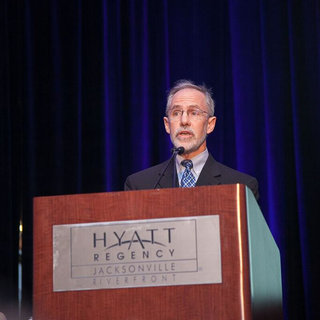2967 阅读 182 下载 2020-08-24 22:11:51 上传 92.99 MB
著名语音学家John J. Ohala论文集(1964~2017)-第1、第2部分
资料整理:张明辉(微信:zhangxiaojian160408)
著名语音学家、美国加州大学伯克利分校荣休教授John J. Ohala教授于近日辞世。为表敬慕与纪念,小编整理了1964~2017年间Ohala教授的主要论文、著述章节或讲演PPT,总共分为5个部分。

John J. Ohala (July 19, 1941 – August 22, 2020) was a linguist specializing in phonetics and phonology. He was a Professor Emeritus in linguistics at the University of California, Berkeley.
He received his PhD in linguistics in 1969 from the University of California, Los Angeles (UCLA); his graduate advisor was Peter Ladefoged. He is best known for his insistence that many aspects of languages' phonologies (a.k.a. "sound patterns") derive from physical and physiological constraints which are independent of language and thus have no place in the "grammar" of a language, i.e. what speakers have to learn inductively from exposure to the speech community into which they are born.
He also proposed that ethological principles influence certain aspects of languages' prosodic patterns, sound symbolism, and facial expressions, such as lip and brow movements.
John J. Ohala教授的115篇著作(1964~2017)目录
| 序号 | 年份 | 题目 |
| 001 | 1966 | A new photoelectric glottograph |
| 002 | 1969 | Use of hooked-wire electrodes for electromyography of the intrinsic laryngeal muscles |
| 003 | 1969 | The function of the sternohyoid muscle in speech |
| 004 | 1971 | Monitoring soft-palate movements in speech |
| 005 | 1971 | The role of physiological and acoustic models in explaining the direction of sound change |
| 006 | 1972 | How is pitch lowered? |
| 007 | 1972 | How to represent natural sound patterns |
| 008 | 1972 | The physiology of tone |
| 009 | 1973 | The problem of aspiration in Hindi phonetics |
| 010 | 1973 | Explanations for the intrinsic pitch of vowels |
| 011 | 1974 | Experimental historical phonology |
| 012 | 1975 | Phonetic explanations for nasal sound patterns |
| 013 | 1975 | A mathematical model of speech aerodynamics |
| 014 | 1975 | The temporal regulation of speech |
| 015 | 1976 | Comments on 'Temporal interaction within a phrase and sentence context' |
| 016 | 1977 | The physiology of stress |
| 017 | 1977 | The story of [w]: an exercise in the phonetic explanation for sound patterns |
| 018 | 1978 | Southern Bantu vs. the world: the case of palatalization of labials |
| 019 | 1978 | The production of tone |
| 020 | 1978 | Phonological notations as models |
| 021 | 1979 | The contribution of acoustic phonetics to phonology |
| 022 | 1979 | Universals of labial velars and de Saussure's chess analogy |
| 023 | 1979 | Phonetic universals in phonological systems and their explanation |
| 024 | 1979 | Passive vocal tract enlargement during voiced stops |
| 025 | 1979 | Phonetic explanations for the development of tones |
| 026 | 1980 | Moderator's summary of symposium on 'Phonetic universals in phonological systems and their explanation' |
| 027 | 1980 | The acoustic origin of the smile |
| 028 | 1980 | The application of phonological universals in speech pathology |
| 029 | 1980 | Phonetically motivated parallels between child phonology and historical sound change |
| 030 | 1981 | Listeners' ability to identify languages by their prosody |
| 031 | 1981 | Articulatory constraints on the cognitive representation of speech |
| 032 | 1981 | The listener as a source of sound change |
| 033 | 1983 | Speech timing as a tool in phonology |
| 034 | 1983 | The phonological end justifies any means |
| 035 | 1983 | The origin of sound patterns in vocal tract constraints |
| 036 | 1983 | Modern applied linguistics |
| 037 | 1984 | An ethological perspective on common cross - language utilization of F0 of voice |
| 038 | 1984 | Chairman's summary of Symposium on Phonetic Explanation in Phonology |
| 039 | 1984 | Prosodic phonology and phonetics |
| 040 | 1985 | Around flat |
| 041 | 1986 | Experimental Phonology: Introduction |
| 042 | 1986 | Testing hypotheses regarding the psychological manifestation of morpheme structure constraints |
| 043 | 1986 | Against the direct realist view of speech perception |
| 044 | 1986 | Consumer's guide to evidence in phonology |
| 045 | 1987 | Experimental phonology |
| 046 | 1987 | Explanation in phonology: Opinions and examples |
| 047 | 1987 | Explaining the intrinsic pitch of vowels |
| 048 | 1987 | Psycholinguistic probes of native speakers' phonological knowledge |
| 049 | 1988 | Linguistics as an experimental discipline |
| 050 | 1989 | Discussion of Lindblom's 'Phonetic invariance and the adaptive nature of speech' |
| 051 | 1989 | Sound change is drawn from a pool of synchronic variation |
| 052 | 1990 | Respiratory activity in speech |
| 053 | 1990 | There is no interface between phonetics and phonology. A personal view |
| 054 | 1990 | Hypercorrection in speech perception |
| 055 | 1990 | The phonetics and phonology of aspects of assimilation |
| 056 | 1991 | The integration of phonetics and phonology |
| 057 | 1991 | Epenthetic nasals in the historical phonology of Hindi |
| 058 | 1991 | Nasal epenthesis in Hindi |
| 059 | 1992 | The segment: Primitive or derived? |
| 060 | 1992 | What is the input to the speech production mechanism? |
| 061 | 1992 | What's cognitive, what's not, in sound change |
| 062 | 1992 | Alternatives to the sonority hierarchy for explaining the shape of morphemes |
| 063 | 1992 | Phonetic universals and Hindi segment duration |
| 064 | 1992 | The costs and benefits of phonological analysis |
| 065 | 1993 | Coarticulation and Phonology. |
| 066 | 1993 | The phonetics of sound change |
| 067 | 1993 | The phonetics of nasal phonology: theorems and data |
| 068 | 1993 | Sound change as nature's speech perception experiment |
| 069 | 1994 | Towards a universal, phonetically-based, theory of vowel harmony |
| 070 | 1994 | Phonetics |
| 071 | 1994 | Listeners' identification of speech sounds is influenced by adjacent "restored" phonemes |
| 072 | 1994 | Acoustic study of clear speech: a test of the contrastive hypothesis |
| 073 | 1994 | Hierarchies of environments for sound variation; plus implications for 'neutral' vowels in vowel harmony |
| 074 | 1994 | The frequency codes underlies the sound symbolic use of voice pitch |
| 075 | 1995 | Experimental phonology |
| 076 | 1995 | A probable case of clicks influencing the sound patterns of some European languages |
| 077 | 1995 | The phonetics of phonology |
| 078 | 1995 | Speech perception and lexical representation: The role of vowel nasalization in Hindi and English |
| 079 | 1995 | Nasal loss before voiceless fricatives: a perceptually-based sound change |
| 080 | 1996 | Temporal cues for vowels and universals of vowel inventories |
| 081 | 1996 | Speech perception is hearing sounds, not tongues |
| 082 | 1996 | Ethological theory and the expression of emotion in the voice |
| 083 | 1997 | Alternatives to the sonority hierarchy for explaining segmental sequential constraints |
| 084 | 1997 | Comparison of speech sounds: Distance vs. cost metrics |
| 085 | 1997 | Phonetics in phonology |
| 086 | 1997 | Aerodynamics of phonology |
| 087 | 1997 | Emergent stops |
| 088 | 1997 | Sound symbolism |
| 089 | 1998 | Correlation between consonantal VC transitions and degree of perceptual confusion of place contrast in Hindi |
| 090 | 2000 | Phonetics in the Free Market of Scientific Ideas and Results |
| 091 | 2000 | Irrelevance of the lowered larynx in modern Man for the development of speech |
| 092 | 2001 | Markedness and consonant confusion asymmetries |
| 093 | 2001 | Acoustic VC transitions correlate with degree of perceptual confusion of place contrast in Hindi |
| 094 | 2004 | Phonetics and phonology then, and then, and now |
| 095 | 2004 | Prosody and Phonology |
| 096 | 2005 | Phonetic explanations for sound patterns. Implications for grammars of competence |
| 097 | 2005 | The marriage of phonetics and phonology |
| 098 | 2017 | Phonetics and historical phonology |
| 099 | 2015 | A brief history of experimental phonetics in the 18th and 19th centuries |
| 100 | 2012 | Tone and the Physiology of F0 Variation |
| 101 | 2011 | Accommodation to the Aerodynamic Voicing Constraint and its Phonological Relevance |
| 102 | 2011 | Christian Gottlieb Kratzenstein: Pioneer in Speech Synthesis |
| 103 | 2011 | Micro-phonetic Influences on Syllabification |
| 104 | 2010 | The emergent syllable |
| 105 | 2010 | What is and what is not under the control of the speaker: intrinsic vowel duration |
| 106 | 2009 | Languages’ sound inventories: the devil in the details |
| 107 | 2009 | In Memoriam: Ralph L. Vanderslice and Gunnar Fant |
| 108 | 2009 | Signaling with the eyebrows–commentary on Huron, Dahl, and Johnson |
| 109 | 2008 | The ethological basis of certain signals of affect and emotion |
| 110 | 2008 | Understanding variability in speech: A brief survey over 2.5 millennia |
| 111 | 2008 | Voicing control and nasalization |
| 112 | 2008 | Oral cavity enlargement in retroflex stops |
| 113 | 2011 | Accommodation to the Aerodynamic Voicing Constraint and its Phonological Relevance |
| 114 | 2007 | Moving phonological science from paper to the laboratory: The case of nasals and nasalization |
| 115 | 2006 | The optimal nose |














